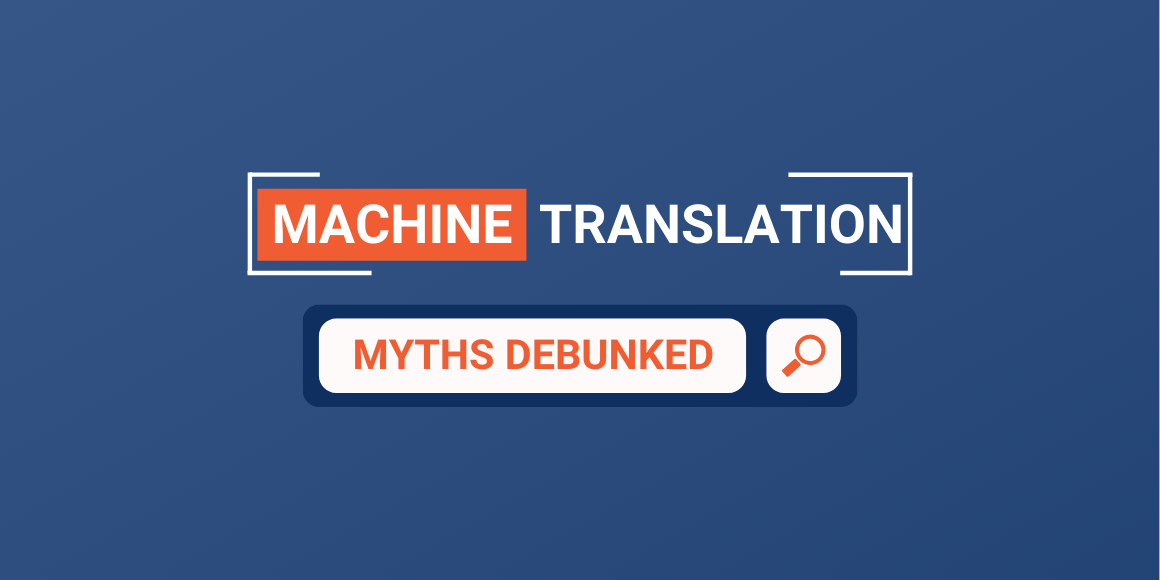This article was originally published in January 2018 and has been updated.
Machine translation (MT) gets a lot of media hype: some deserved, some not. Read on to learn the truth behind three of the most common beliefs about MT.
Myth #1: The best-known machine translation tool is the best machine translation tool.
For many, "machine translation" means "Google Translate." While there's no question that it's the best-known MT tool, Google Translate is far from the only option, and it may not be your best choice. When deciding if an off-the-shelf machine translation software tool is right for your business, there are two primary considerations:
- Security: Are you comfortable with the material being translated going into the public domain? For content already available on the web, this is acceptable, but what about content not intended for the public domain (e.g. internal HR memos or company policies)? Putting confidential content like a new product launch, for example, through an MT engine can lead to the “new product” being leaked.
- Quality: Gone are the days when MT was basically gibberish. MT output can in some cases be on par with human-quality translation, but it requires significant training. Typically, this type of training and customization is not part of the public domain platform. When we think of quality in modern MT solutions, it’s more about “training” your MT engine on the preferred “voice, tone, and style,” as well as contextual understanding of your content. Training and integration of these systems into more holistic translation workflows offer tremendous opportunity for a very wide array of content.
Myth #2: Machine translation has made human translators irrelevent.
This is one of the oldest and most persistent myths about machine translation. Traditionally, MT has been inferior to human translation. With well-trained, modern Neural Machine Translation (NMT) technology, though, the outputs can be almost indistinguishable from human translation. Nevertheless, human translation remains the gold standard. In modern MT solutions, MT is typically used on almost 50% of all content being translated – but only about 15% without any human interaction at all. The vast majority of solutions that use MT pair human and MT together. The question is less about MT or Human but more about, “How do I balance MT and Human?”
Myth #3: It's machine translation versus human translation, an either/or choice.
Everybody loves a good man versus machine story. For example, consider the famous tale of John Henry versus the steam-powered hammer, or more recently, the chess match between Garry Kasparov and Deep Blue. As noted above, recent media coverage of artificial intelligence (AI)-fueled MT has tended toward the sensational, claiming that computers will soon put translators out of work.
Modern MT has pushed the boundaries of what’s possible with MT; business applications that were never expected to be “MT possible” are now regularly using an integrated MT solution – including clinical trials, marketing, and healthcare content. The concept that some translation is only “human” is generally not true anymore and reflects the period when certain types of content (e.g. medical or legal) were considered “not suitable for MT.” Typical Enterprise MT deployments use a broad range of Human and MT integration where MT provides cost and efficiency savings to the linguistic resources, rather than replaces them. The human linguists increasingly act as editors and trainers of the MT output, holding the final decision on voice, tone, and style, as well as industry-specific terminology.
Get the best of both worlds: Combine machine and human translation.
Machine translation software offers a tremendous opportunity to improve speed and turnaround time in a variety of different contexts. Adding in human review can help to provide tone and style, ensure accuracy, and add a creative touch.
ULG leads the world in helping companies understand how to extract value from language technology, including MT. For example, in a recent project for a law firm representing a large corporation, ULG integrated NMT into a custom translation workflow and translated more than 50 million words of highly sensitive case materials in just 10 business days—resulting in client savings of $7 million.
With the world’s best computational linguist team, as well as a class-leading ability to test and train Machine Translation solutions, ULG adapts to our clients’ needs and scale, while also providing a secure MT environment that supports your security policies and ensures your data never leaks into the public domain.
If you have any questions at all about MT, its application, capabilities, integration, or any aspect of using MT within an Enterprise, please contact us to be connected to an expert in the field.

